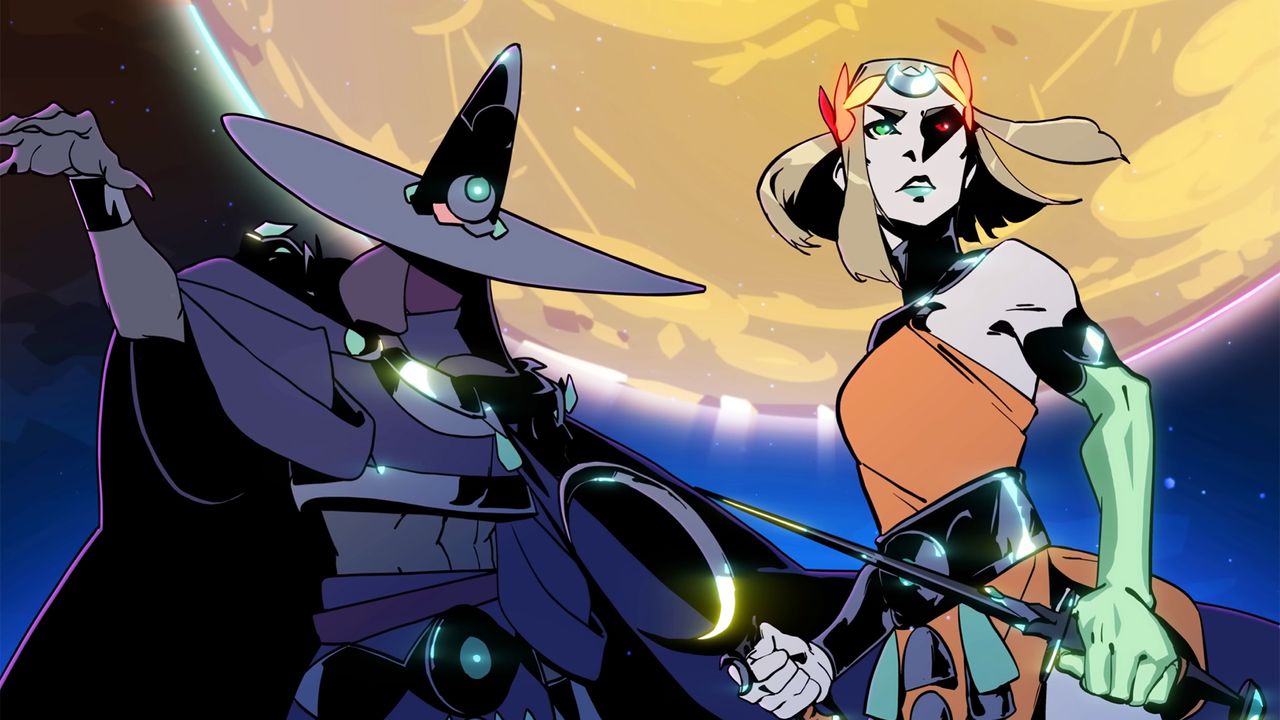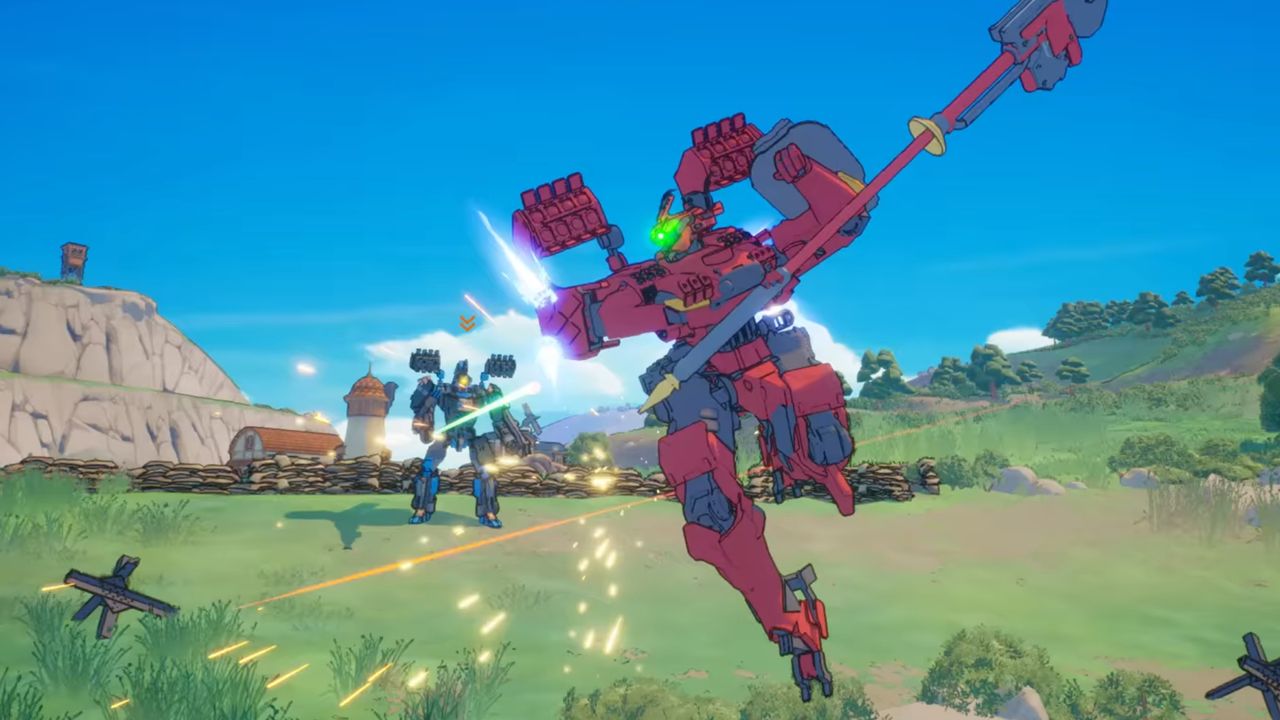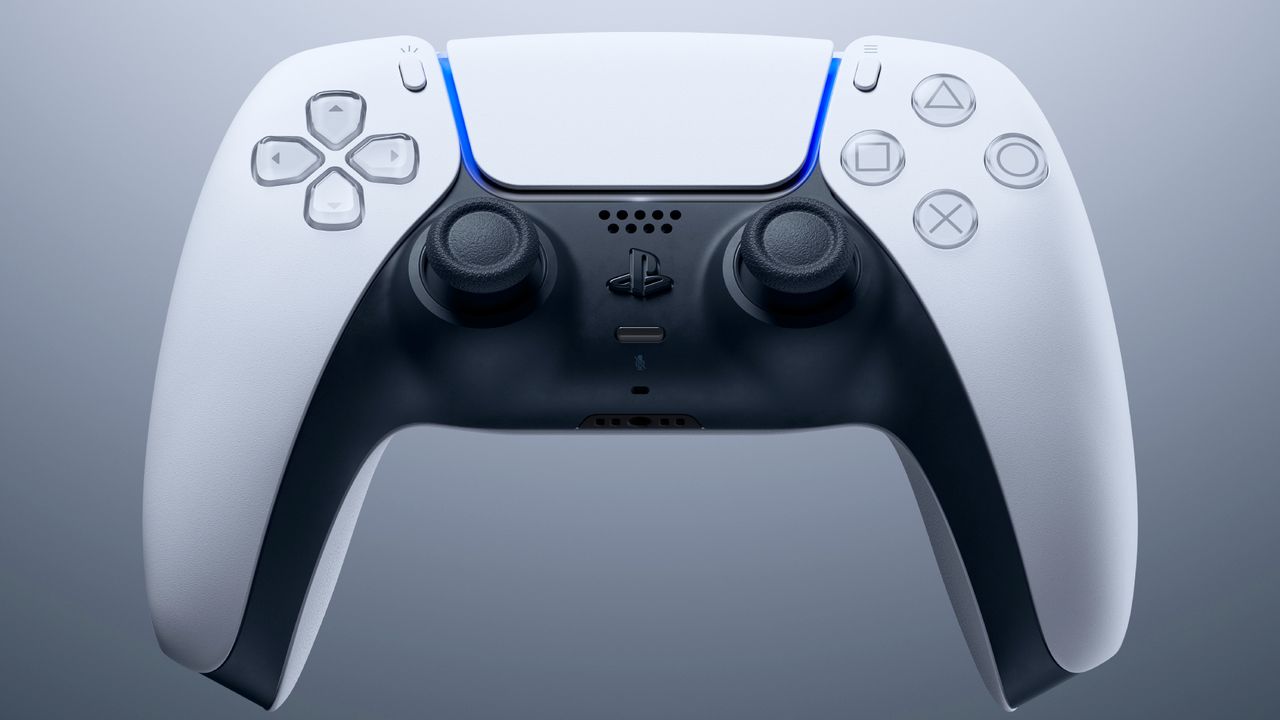
Razer’s Deathadder lineup has some of the best competitive gaming mice of the past decade and, thankfully, the Deathadder V4 Pro continues that tradition. While it looks identical to the V3 Pro – the same body shape, no frills, no extraneous buttons – practically every component has changed, That includes a new 45,000 DPI sensor, an optical scroll wheel, new optical mouse switches, and updated Hyperspeed wireless tech alongside an 8000Hz polling rate. This is a greatest hits of Razer’s tech, a proper flagship mouse focused on pure performance, and with a price to match: at $169.99/£169.99 it’s $20 more than the V3 Pro, and $10 more than the top-of-the-line Viper V3 Pro.
Many players will barely feel a difference. The bigger numbers are, I’d argue, partly a marketing ploy to show how Razer is ahead of everyone else. Higher polling rates offer diminishing returns (and a few compromises) with 8000Hz being overkill that many players may not even notice. And given most gamers, even pros, rarely use anything higher than 3200 DPI, why would you need this new sensor? But after testing the Deathadder V4 Pro for a week, I cannot deny its brilliance. Without the cutting-edge tech it’d still be a sleek, comfortable, light, responsive, sturdy mouse – with the incremental improvements of the new tech it’s arguably the best Razer has ever made.
Razer Deathadder V4 Pro – Design and Features
The Deathadder V4 Pro keeps the same tried-and-tested shape as the V3 Pro, and I’m glad Razer didn’t tinker. The mouse’s hump, which peaks just behind the left mouse button, fits snugly in my palm, and it still felt comfy after five-hour sessions. It is a relatively big mouse at 128mm (L) x 68mm (W) x 44mm (H), making it a tad larger than the Viper V3 Pro, which was already heftier than most. But whatever position I put my hand in – moving forward or back, wide grip or narrow – it felt great. I favour a mixture of a palm grip and a fingertip grip, and the mouse suits both (claw users report that the identically shaped V3 Pro was comfortable, too).
It helps that it’s light at 56g, which is 10% lighter than the V3 Pro. Combine that with PTFE feet that cover a larger surface area and you get a mouse that glides like liquid across your mousemat. The mouse coating is the same material Razer has used in other recent mice; it’s smooth enough that it never chafes, but sticky enough that my hand never slipped. It properly grips your fingertips, which means you can move it with very little pressure.

It is also a remarkably study mouse. I really tried to make it flex or bend but I couldn't, and it was completely silent when I shook it violently, suggesting tight internals. Whether it will last for years is impossible to say but the Deathadder series has, on the whole, stood the test of time – I have used my Deathadder V2 on and off for five years with no problems.
One flaw of the Deathadder V3 Pro was its scroll wheel, which felt mushy and loose with age. The new scroll wheel is optical, rather than mechanical, which reduces the friction between components and should reduce wear over time. I can’t promise that, but I can say that it feels taught and precise, with no side-to-side wobble. I didn’t have a single scroll jump, where the wheel goes further than intended, and I never got caught between scroll increments. The scroll wheel press itself is mechanical, rather than optical, but it too felt reliable: I used it loads when playing the recently released Rematch (you press the scroll wheel to call for a pass), and it never let me down.
The left and right mouse clickers have brand-new optical switches, and I think they’ll be divisive. Not because of how they feel, since they are responsive and require very little force to press, which makes fast clicks easy, but because of how they sound. They are loud with a high-pitch ‘ping’ that I’ve seen others call cheap and tinny. I personally like a louder click, and to me it sounded crisp and satisfying. Crucially, they work flawlessly. I never misclicked, and every single press registered instantly.
From the spec sheet to actual performance, the Deathadder V4 Pro is the ultimate gaming mouse.That goes for the side buttons as well, and unlike in the V3, there’s a small gap between them, which makes it easier to distinguish one from the other in an intense firefight, for example. There are only two of them, so if you like lots of buttons on your mouse, then this isn’t for you. Even the DPI button (which many mice put on the top) is on the bottom, so you have to turn the mouse over to adjust it. That doesn’t bother me because once I’ve picked a DPI for a game I usually stick with it, making minor adjustments using the in-game settings.
Be aware, too, that it’s also not a particularly portable mouse: there is no Bluetooth connectivity, and you can only use it if you plug in the large, half-orb dongle, so if you like to travel with your mouse or switch between machines, this might not be for you.
The dongle itself is a fantastic bit of kit, though. I like the way it looks on my desk; the embossed, shiny Razer logo occasionally catches the light and stands out from the smooth matte coating of the rest of it. It’s satisfyingly weighty (at around 44g, it’s nearly as heavy as the mouse itself) and it has a grippy rubber underside, so it’s hard to accidentally shift it on your desk. The accompanying cable is stiff and unlikely to tangle.
The three indicator lights, which reflect your chosen settings, are bright and I like having the at-a-glance reminder of my setup: I never had to wonder what polling rate or DPI I’d picked. My only gripe is a minor one – it uses two shades of green to distinguish between different battery levels, and they’re hard to tell apart at a glance.
Most importantly, the connection is both instant and constant whenever you turn the mouse on. It never dropped in all my testing, and whenever I tweaked the mouse settings, such as adjusting the DPI or the polling rate, the indicator lights flicked immediately, giving me extra confidence that the settings had actually changed.
Razer says this new version of their HyperSpeed wireless tech, with an adjustable polling rate from 125Hz up to 8000Hz, has much lower latency than the previous one, while the sensor is its fastest and most accurate yet. We’re at a point where top-end gaming mice are so good that it’s nearly impossible to notice incremental differences. The Deathadder V4 Pro blows past Razer’s other mice on paper, and it’s reassuring to know you’re using the best tech possible, but it doesn’t feel like a generational leap when I’m playing. Faultless, yes, but not life-changing.

Razer Deathadder V4 Pro – Battery Life and Software
The Deathadder V4 Pro promises battery life of up to 150 hours at a 1000Hz polling rate, shortening to 22 hours at 8000Hz, which is as good as you’ll get from a top-end gaming mouse. That 1000Hz figure is in line with my testing: it took me roughly 8 hours to drain every 5% so it’s possible to use it for weeks without needing to charge it.
At 8000Hz polling, I was losing 10% roughly every 2.5 hours, which is actually slightly better than advertised. That’s likely because you can think of polling rate like a cap – sometimes you’re not going to be moving the mouse enough to “saturate” it, so your actual polling rate will be lower and the battery life longer.
If the battery life is brilliant, Razer’s Synapse software, which you use to manage your mouse, is less so. Plenty of bloat confronts you when you boot it up. At the top of the “devices and modules” menu is a prompt to install Amazon’s Alexa, for example, while there’s a tab called Exchange where you can download “pre-built macros designed for AI-powered tasks”.
Some of the tech is overkill, and it’s pricey, but you’re paying for the cutting edge.More than once Synapse didn’t recognise that my mouse was plugged in: I was told the Deathadder V4 was switched off despite the fact I was clicking on it (it resolved when I rebooted Synapse). Some of the features lack proper explanation. Take dynamic sensitivity, for example, which lets you adjust your sensitivity based on how quickly you’re moving the mouse.
You can tune it so that fast swipes move the mouse further than slow ones which, on paper, sounds good for twitchy shooters. I don’t like it because I’m too used to regular aiming, but I imagine there are pro players who understand their aim tendencies far better than me who will get something out of it. But it’s poorly described in the app as it prompts you to pick from presets, or customize your own sensitivity curve, without describing what each one does, and there’s no prompt to learn more information.
Thankfully the core features of Synapse – the most important ones for day-to-day use – are simple and easy to manage. With a few clicks, you can customize five different stages of sensitivity and switch between polling rates. You can also adjust what information the hemisphere dongle shows with its three LEDs. I decided to forgo the “connection quality” for a light that showed me my current DPI, and then I adjusted the colour for each DPI setting. As somebody who switches DPI between games, I found it useful to always know what I’d picked.

You can also auto-switch your polling rate for gaming: I toggled this setting on and it worked every time. It means you can stay at, say, 1000 Hz to preserve battery life when you’re working, and then automatically bump up the polling rate for gaming. And having the rate displayed on the dongle means you can be certain it’s switched.
The mouse rotation setting is not new, but it’s worth mentioning. The idea is that not everyone moves their mouse in exact right angles relative to their set up. I slightly tilt my mouse to the left in relation to my mousemat, but swipe in line with the pad, meaning my left and right movements are, technically, slightly off-line. Razer has a tool that asks you to move side to side and then recommends an adjustment to the sensor axis to accommodate for this. I stuck with its recommended tweak and it felt natural.
Annoyingly, that testing tool is in your browser, rather than in Synapse. This is a bit of a theme with Razer tools: when you use the mouse you’ll be prompted to make a firmware update, which takes you to your browser, and a tool to test polling rate is separate, and downloadable from Razer’s website. Synapse is, overall, as imperfect as it always has been, but it does offer a robust level of customisation and nails the basics.
Looking to upgrade your keyboard, too?
Check out our roundup of the best gaming keyboards!
Razer Deathadder V4 Pro – Performance and Gaming
I tested the Deathadder in four different games, all with different demands: Counter-Strike 2 for snappy first-person aiming and Fortnite as my third-person shooter, where you can use your mouse for mobility as much as fighting. I also tested Rematch – which, when played with a mouse, requires lots of both sweeping turns and small adjustments – and Doorkickers 2, which is a slower tactical game where you’re drawing paths to direct units around a level. It performed perfectly in every scenario.
Razer’s 45K sensor is undoubtedly overkill. Nobody needs 45,000 DPI (dots per inch explained here), or to move their mouse at 900 inches per second, the maximum that the mouse can track. But it is certainly cutting-edge tech. Every hand and finger movement was reflected immediately, and accurately, on screen. I detected no lag, no stutter, no stray inputs: I felt like I could completely trust the Deathadder V4 Pro to match what I told it to do, which is everything I can ask for in a mouse.
Normally I use 800 DPI and set my in-game sensitivities accordingly: with this sensor, I felt confident that I could raise my DPI to 3,200 and cut my in-game number, giving me the same overall sensitivity but, theoretically, more precision from the higher DPI. I can’t say it actually made me play better (my aim remains mediocre), but it could well make a difference in high-level pro play.

That was true even at 1000Hz polling rate (meaning it’s pinging your PC 1,000 times a second), the lowest I’d recommend using with this mouse. As you increase the polling rate, you theoretically get smoother, less jittery mouse movement. There is an ongoing debate about whether anything above 1000Hz is worthwhile. Lots of people can’t tell the difference, even when you play back gameplay in ultra slow-mo, and to really take advantage you’ll need both a high refresh-rate monitor (144hz at a minimum, but ideally higher) and a beefy gaming rig to get as many frames per second (fps) as possible.
I can’t say, hand on heart, that 8000Hz felt smoother than 1000Hz on my 144Hz screen. Once, after playing for about five hours on 8000 Hz, I bumped the polling rate down to 1000 Hz, and it felt different in the moment, but it certainly didn’t feel worse.
Sometimes, a higher polling rate can even be detrimental. The drop-off in battery life is not a big deal to me as I have a habit of charging between gaming sessions. The bigger problem is the strain higher polling rates can put on your CPU. In Counter-Strike 2, playing at the highest polling rate didn’t affect my fps – but in Fortnite, which uses Unreal Engine, it knocked a good 20-30 fps off, so it actually felt less smooth to play at higher polling rates (it’s for this reason that many Fortnite pros go with 1000 Hz).

That said, some people do swear they can feel a noticeable difference with higher polling rates. And I’d also argue that being able to play with the confidence of knowing you have the fastest possible mouse can only be a good thing – even if, in reality, the gains are marginal. Thus, I settled with 2000 Hz for most games. It makes the Deathadder V4 Pro a fully future-proof mouse: you can buy this knowing that if you upgrade your monitor, CPU, or GPU in the coming years, the mouse will more than keep up.
Whether it’s worth it comes down to a question of what you value: this is, after all, one of the most expensive mice that you can buy. I can’t honestly tell you that the performance will feel faster than, say, the HyperX Pulsefire Haste 2 Pro, with its polling rates of up to 4000Hz, or the 8000Hz Asus ROG Keris II Ace, which launched with a comparable MSRP, but is now available significantly cheaper. You can spend half as much and still get an excellent wireless gaming mouse, but if you’re after the absolute best in performance, then this is it.




























